Workers Are Getting Paid to Do Nothing at Los Alamos National Laboratory
The nuclear weapons complex is so mismanaged that employees are collecting full salaries to play chess and catnap.
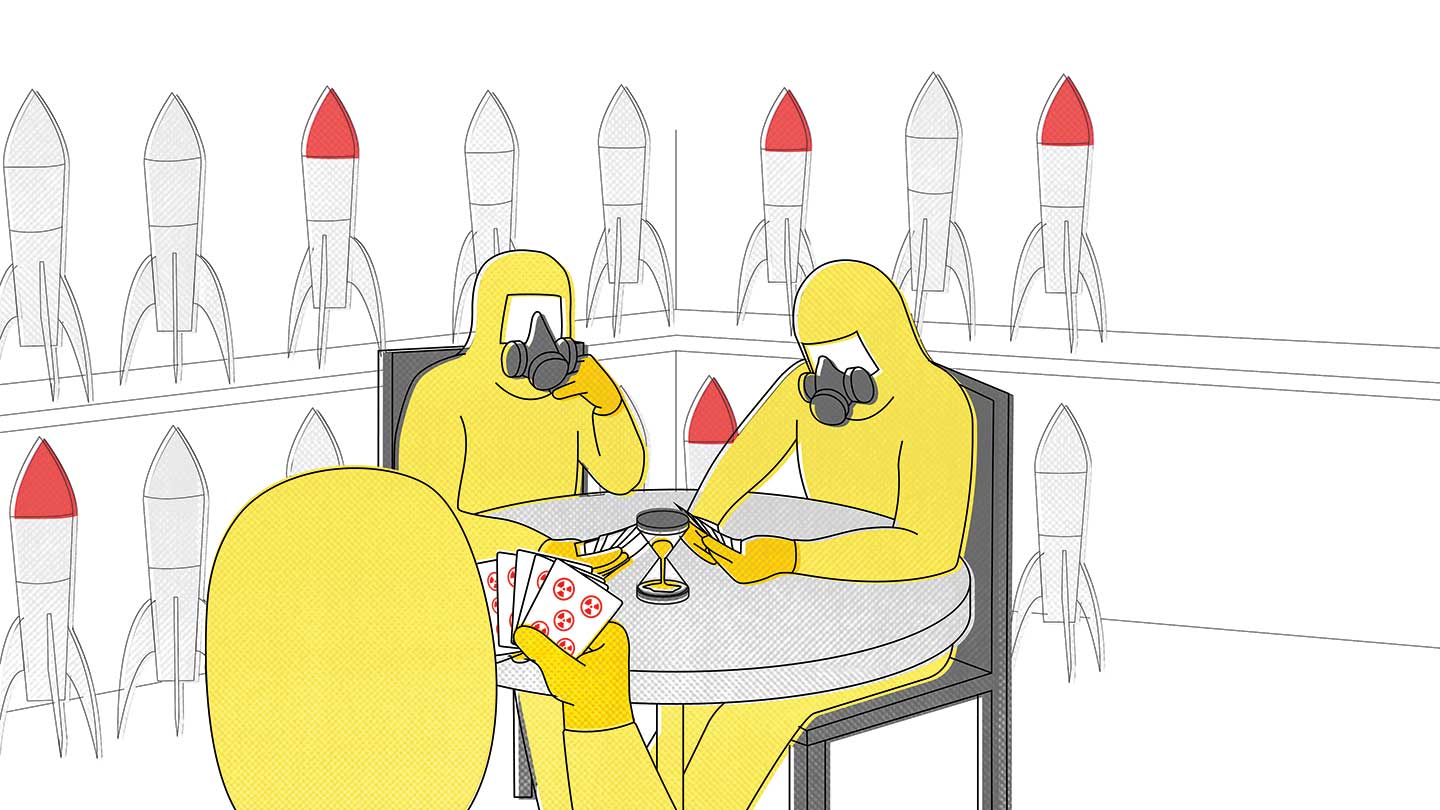
A few days after beginning a new post at Los Alamos National Laboratory (LANL), Jason Archuleta committed a subversive act: He began to keep a journal. Writing in a tiny spiral notebook, he described how he and his fellow electricians were consigned to a dimly lit break room in the heart of the weapons complex.
“Did nothing all day today over 10 hrs in here,” a July 31 entry read. “This is no good for one’s mental well-being or physical being.” “I do hope to play another good game of chess,” noted another entry the following day.
A journeyman electrician and a proud member of the International Brotherhood of Electrical Workers Local 611, Archuleta had recently been assigned to Technical Area 55 (TA-55). He had resisted the assignment, knowing that it was the location of “the plant,” a sealed fortress where plutonium is hewn into pits—cores no bigger than a grapefruit that set off the cascade of reactions inside a nuclear bomb. The design harks back to the world’s first atomic weapons: “Gadget,” detonated at the Trinity test site some 200 miles to the south in 1945, and “Fat Man,” dropped on Nagasaki shortly afterward.
It has been almost that long since LANL last produced plutonium pits at its current scale, as part of the federal government’s mission to modernize its aging stockpile. The lab, now in the midst of tremendous growth and abuzz with activity, is pursuing that mission with single-minded intensity. Construction is visible in nearly every corner of the campus, and traffic is bumper to bumper as commuters shuttle up and down a treacherous road that cuts across the Rio Grande Valley into the remote Pajarito Plateau on the way to the famous site of the Manhattan Project.
But from the inside, Archuleta tells a different story: that of a job site where productivity has come to a standstill. With few exceptions, he says, electricians are idle: They nap, study the electrical code book, or play chess, dominoes, and cards. On rare occasions, they work, but as four other journeymen (who all requested anonymity for fear of retaliation) confirmed, the scenario he describes is accurate. At any given time, up to two dozen electricians are cooling their heels in at least three different break rooms. LANL officials even have a term for it: “seat time.”
The lab acknowledges that the expansion at TA-55, and especially the plant, presents challenges that are faced by no other industrial setting in the nation. The risk of radiation exposure is constant; security clearances are needed; one-of-a-kind parts must be ordered; and construction takes place as the plant strives to meet its quota. That can mean many workers sit for days, weeks, or even, according to several sources, months at a time.
“I haven’t seen months,” said Kelly Beierschmitt, LANL’s deputy director of operations. “It might feel like months,” he added, citing the complications that certain projects pose. “If there’s not a [radiation control technician] available, I’m not gonna tell the craft [worker] to go do the job without the support, right?”
Such revelations are seen as red flags by independent government watchdogs, who note that the project is already billions of dollars over budget and at least four years behind schedule. They say that a workplace filled with idle workers is not merely a sign that taxpayer money is being wasted; more troublingly, it indicates that the expansion is being poorly managed.
“If you have a whistleblower claiming that a dozen electricians have been sitting around playing cards for six months on a big weapons program, that would seem to me to be a ‘Where there is smoke, there is fire’ moment,” said Geoff Wilson, an expert on federal defense spending at the independent watchdog Project on Government Oversight.
Given the secrecy that surrounds the lab, it is virtually impossible to quantify anything having to do with LANL. That obsession is the subject of Alex Wellerstein’s 2021 book, Restricted Data: The History of Nuclear Secrecy in the United States. Wellerstein, a historian of science at Stevens Institute of Technology, traces that culture of secrecy from the earliest years of the Manhattan Project into the present. Across those decades, the notion of keeping secrets from adversaries has evolved into keeping secrets from the American public—and the regulators.
“What secrecy does is it creates context for a lack of oversight,” Wellerstein said in a recent interview. “It shrinks the number of people who might even be aware of an issue and it makes it harder—even if things do come out—to audit.”
The culture of secrecy is almost palpable. The lab sits astride a forbidding mesa some 7,500 feet above sea level, protected on the city’s western flank by security checkpoints. Its cardinal site, TA-55, is ringed by razor wire and a squadron of armed guards, bolstered by armored vehicles with mounted turrets that patrol the perimeter day and night. No one without a federal security clearance is allowed to enter or move about without an escort—even to go to the bathroom. Getting that clearance, which requires an intensive background investigation, can take up to a year.
Sources for this story, veterans and newcomers alike, said they fear losing their livelihoods if they speak publicly about anything to do with their work. Few jobs in the region, much less the rest of the state (one of the most impoverished in the nation), can compete with the salaries offered by LANL. Here, journeymen electricians can earn as much as $150,000 a year; Archuleta makes $53 an hour, almost 70 percent more than electricians at other union sites.
Nevertheless, in late September, Archuleta lodged a complaint with the inspector general’s office alleging time theft. He and two other workers told the nonprofit news organization Searchlight New Mexico that their time sheets—typically filled out by supervisors—have shown multiple codes for jobs they didn’t recognize or perform. To his mind, the situation is “not just bordering on fraud, waste, and abuse; it’s crossing the threshold.”
After looking into the allegations, LANL officials told Searchlight they didn’t add up. “The information we received about how craft workers report their time does not align with what you were told,” a spokesperson wrote in an e-mail. “Any statement about falsifying time,” she added, “is extremely serious.”
Popular
“swipe left below to view more authors”Swipe →
What to others is the “new Manhattan Project” is to LANL director Thom Mason “the ultimate guarantor of our security”—replacing the plutonium in the US nuclear weapons arsenal. J. Robert Oppenheimer’s original project cost taxpayers about $30 billion in today’s dollars; with cost overruns, the current mission will almost double that.
Yet there remains an unavoidable question at the core of the nation’s current undertaking: Is the replacement actually warranted? “It’s sort of glass half-full, glass half-empty,” Mason himself acknowledged in a LANL publication only two years ago. The majority of America’s plutonium pits are about 40 years old, made at the height of pit production in the 1980s. “We can’t prove that [those plutonium pits] will fail, but we also can’t prove that they will work,” he said, emphasizing the uncertainty.
LANL—home of the world’s first atomic bomb and one of the nation’s three nuclear weapons labs—has long sought to bring industrial-scale pit production back to its campus. Those efforts began even before the Rocky Flats Plant in Colorado, which at its height produced between 1,000 and 2,000 pits per year, was shut down by the FBI for gross environmental violations in 1993. Over the decades since, four attempts were made to transfer some of that capability to Los Alamos. Each ended in total failure, either because of lack of political will, lack of need, poor infrastructure, or excessive costs.
This fifth attempt comes amid anxieties about China’s recent expansion of its nuclear arsenal and Russia’s war on Ukraine. Both have raised the prospect of a frightening new Cold War in which the United States is vying for supremacy with not one but two global nuclear powers.
“By all the normal measures our society uses to evaluate cost, benefit, risk, reliability, and longevity, this latest attempt has now already failed as well,” said Greg Mello of the Los Alamos Study Group (LASG), a respected nonprofit that has been monitoring LANL for 34 years. “Federal decision-makers will have to ask, ‘Will the LANL product still be worth the investment?’” Mello said, referring to the plant, which will have exceeded its planned lifetime of 50 years in 2028.
The cogs of this arms race have been turning for years. In May 2018, a few months after President Donald Trump tweeted that he had a “much bigger & more powerful” nuclear button than North Korea’s Kim Jong Un, the Nuclear Weapons Council certified a recommendation to produce plutonium pits at two sites.
Its recommendation was enacted into law by Congress, which in 2020 called for an annual quota of plutonium pits—30 at LANL and 50 at the Savannah River plutonium processing facility in South Carolina—by 2030. According to the LASG, the cost per pit produced at LANL is greater than at Savannah River. The organization estimates that each pit will run approximately $100 million.
Whether such production goals are achievable is another question. Just getting those two sites capable of meeting the quota will cost close to $50 billion—and take up to two decades from the project’s start. After that, another half-century may pass before the nation’s approximately 4,000 plutonium pits are upgraded, according to the calculations of Peter Fanta, the former deputy assistant secretary of defense for nuclear matters.
“Want to know where 80 pits per year came from? It’s math. Alright? It’s really simple math,” Fanta told the Aiken Standard, a South Carolina newspaper. “Divide 80 per year by the number of active warheads we have—last time it was unclassified it was just under 4,000—and you get a timeframe.”
As a veteran of the US Air Force, Jason Archuleta said so much “seat time” ran counter to his patriotic values. It also ran counter to common sense: LANL was on a historic hiring spree, justified by the need to modernize the nation’s nuclear stockpile and roll out several major infrastructure projects that are essential to the expansion. Suddenly, it seemed that everyone was going to TA-55, the very center of the weapons mission. Yet, looking around, Archuleta estimated that there was “over 200 years of experience sitting in a break room.”
Archuleta’s union has been the lab’s partner ever since the earliest years of the Manhattan Project. Beginning in the 1940s, electricians from IBEW Local 611 traveled from the Rio Grande Valley, a mosaic of Hispanic and Indigenous villages, into Los Alamos to install and maintain the lab’s and the burgeoning city’s utilities.
But when Archuleta was given his reassignment in July, he was torn. He had been working at LANL for a year and was happy with his job. He had no desire to participate in TA-55’s historic expansion, on moral grounds.
He voiced his objections to Triad National Security, the government contractor that manages LANL, and was informed he had no choice. According to the five-year agreement between Triad and the union, workers are prohibited from striking; on the other hand, Triad reserves the right to “hire, suspend, promote, demote, transfer, or discharge employees” as it sees fit. Archuleta’s only option would be to “drag up”—resign, in union lingo. Doing so would force him to seek work at the only other union sites with “open calls,” most of which are in or around Albuquerque, almost 100 miles from where he and his family have long made their home in the Española Valley.
Archuleta said he called New Mexico’s two Democratic senators, Martin Heinrich and Ben Ray Luján, multiple times to relay his concerns. Each time, he left a message with his name and the details of his mother’s cancer, which animated his fears of working near nuclear materials. After a career spent at LANL, the Nevada Test Site, and Rocky Flats, where she did environmental cleanup, Bernadette Archuleta died of lymphoma. The Department of Energy paid her a settlement shortly before her death, Jason Archuleta said, but never acknowledged culpability.
The messages to his senators went unanswered. (Heinrich’s office has no record of his calls, according to a staffer; Luján’s office ignored multiple requests for comment.) Both Heinrich and Luján have given their full support to plutonium pit production at Los Alamos. They’ve also been integral to keeping the mission—and the federal dollars it rakes in—in New Mexico.
“I remain steadfast in my commitment to ensuring our national labs’ success and tapping into their full potential to fuel a strong economic base for our whole state,” Heinrich declared in 2019.
Unwilling to face a 200-mile round trip every day, Archuleta decided, grudgingly, to go to TA-55, joining the approximately 430 craft workers—electricians, carpenters, plumbers, sheet-metal workers, masons, painters, welders, and maintenance staff—stationed there and at a sister site, TA-50. His arrival coincided with the peak of summer. The air conditioning was spotty, and there were so few chairs in the break room that some people had to stand. The journeymen wanted to work, but amid one of the nation’s most ambitious capital projects, Archuleta and his fellow electricians “were getting sent to go sit on our hands.”
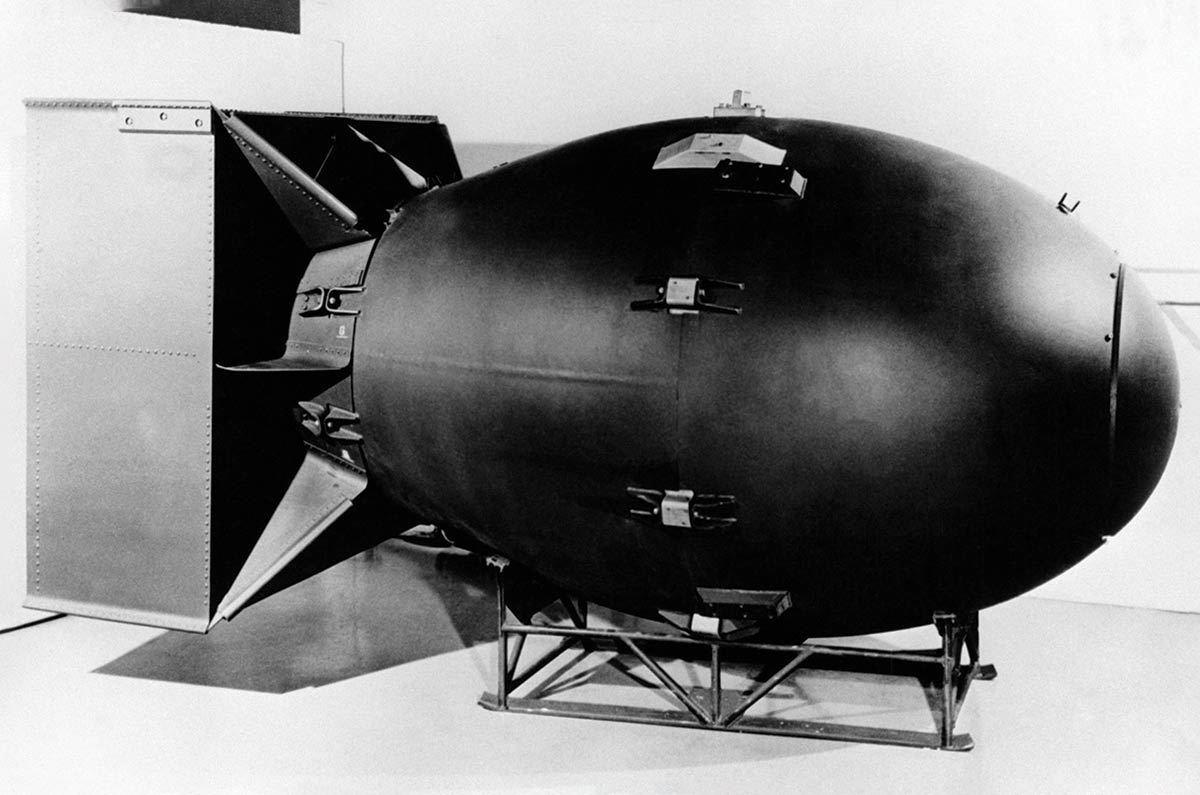
Government and independent watchdogs question the mission’s very logic, often citing a widely circulated report published in 2007 by JASON, the independent science advisory group with roots in the Cold War that advises the US government on matters of science and technology. Plutonium pits, the group stated, “have credible minimum lifetimes in excess of 100 years,” meaning the current stock was in robust middle age.
But by the end of the next decade, the political tides had radically changed, and pit production took on a renewed urgency. Congress requested a report on pit aging in 2019, and JASON delivered a brief and surprising about-face, one that contradicted its earlier assessment. Studies of pit aging hadn’t been prioritized by the National Nuclear Security Administration (NNSA) in the intervening years, JASON now said, and there wasn’t sufficient data to determine how aging might affect a warhead’s reliability. It recommended a program to do so and, in the same stroke, advised that pit production be reestablished “as expeditiously as possible.”
Plutonium is one of the most volatile and enigmatic elements on the periodic table. It ages on the outside like other metals, while on the inside, “it’s constantly bombarding itself through alpha radiation,” as Siegfried Hecker, a plutonium metallurgist and former LANL director, put it. The damage is akin, in his words, to “rolling a bowling ball through [the plutonium’s] crystal structure.” Most of it can be healed, but about 10 percent can’t. “And that’s where the aging comes in.”
The renewed urgency dodges the most resounding “unanswered question at the heart of the U.S.’s nuclear arsenal,” Stephen Young, the senior Washington representative for the Global Security Program at the Union of Concerned Scientists, wrote in Scientific American. “What is the lifetime of a pit?” And why hasn’t NNSA—the federal agency tasked with overseeing the health of the nuclear weapons stockpile—dedicated the resources to finding out?
“It seems entirely possible that this was not an oversight on the part of NNSA but reflects that the agency does not want to know the answer,” Young went on. With novel warhead designs on the horizon, it was entirely plausible, he posited, that NNSA wasn’t merely seeking to replace old pits but instead wanted to produce entirely new weapons—a desire driven less by science than by politics.
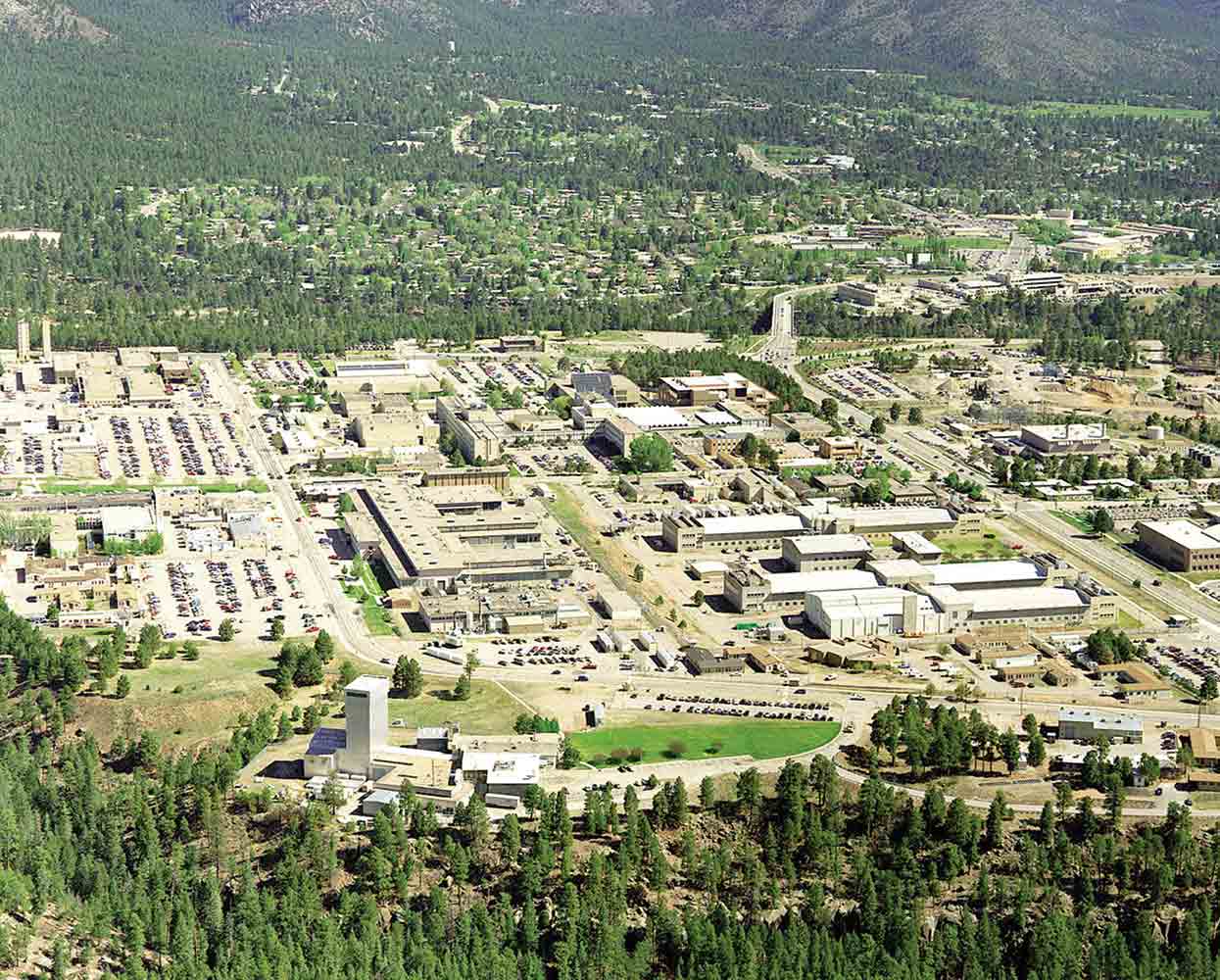
This uncertainty has worked in LANL’s favor, propelling the mission forward and all but securing the lab’s transformation. As Beierschmitt, the deputy director of operations, publicly described the lab’s goals this summer: “Keep spending and hiring.”
Meanwhile, the Government Accountability Office, which investigates federal spending and provides its findings to Congress, has pointed to a gaping blind spot in the mission. A January report detailed how NNSA lacked a comprehensive budget and master schedule for the entire US nuclear weapons complex—essential for achieving the goal of producing 80 pits per year. The agency, in other words, has failed to outline what it needs to do to reach its target—or what the overall cost will be, the GAO concluded.
“How much they’ve spent is pretty poorly understood because it shows up in so many different buckets across the budget,” said Allison Bawden, the GAO’s director of natural resources and environment. “We tried to identify these buckets of money ultimately tied to supporting the pit mission. But it’s never presented that way by NNSA, so it’s very difficult to look across the entire pit enterprise and say, ‘This is how much has been spent, and this is how much is needed going forward.’” The GAO includes the Department of Energy on its biennial list of federal agencies that are most vulnerable to fraud, waste, and abuse—and has done so since 1990. A major reason is the Möbius strip of contractors and subcontractors working on DOE-related projects at any given time.
The DOE, for instance, oversees NNSA, which oversees Triad National Security—a company owned by Battelle Memorial Institute, Texas A&M University, and the University of California. Triad oversees its own army of subcontractors on lab-related projects, including construction, demolition, and historic preservation. And many of those subcontractors outsource their work to yet other subcontractors, creating money trails so byzantine they defy tracking.
But one thing is known: Subcontractors will rake in billions of dollars. “We expect to be executing at least $5.5 billion in construction over the next five years and $2.5 billion in subcontracting labor and materials,” Beierschmitt said at a 2019 forum.
Meanwhile, the number of employees keeps growing. The most significant increase is at TA-55, home of the plant—“the only fully operational, full capability plutonium facility in the nation,” according to NNSA.
Like so much of LANL’s aging campus, it must first undergo major renovations. These include replacing an obsolete fire alarm system with one able to detect fires earlier and send out audible alerts across the 233,000-square-foot plant. That critical upgrade was cause for consternation among LANL management. Only there weren’t nearly enough electricians with federal security clearances to do the job, according to an August GAO report, and as of May 2022, productivity was down by 24 percent. It was among the nine major pit-mission-related LANL projects that are now over-budget and behind schedule. The overall cost to complete five of them may go over budget by a staggering 30 to 40 percent.
“Most people think that for something so giant and supposedly so important to the nation, there would be some kind of well-thought-through plan,” said Mello of the LASG. “There is no well-thought-through plan. There never has been.”
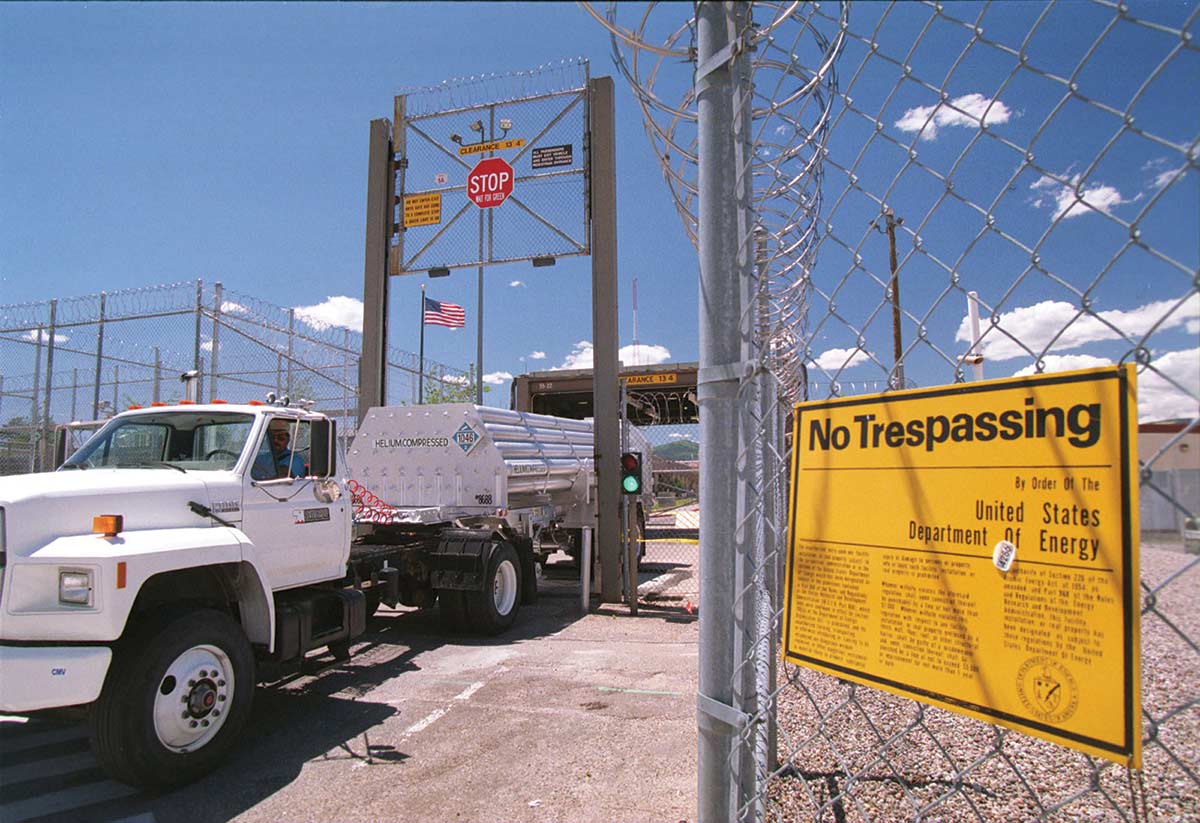
In 1950, at the dawn of the new era of arms control and deterrence, LANL was at a crossroads. One member of the new Atomic Energy Commission (AEC) questioned not only the cost overruns in two of its major construction projects—“the new explosives plant and the chemical-metallurgy laboratory”—but also the whole point of maintaining the lab in Los Alamos.
“This is probably our last economical chance to review the desirability of keeping the weapons research work at Los Alamos,” wrote AEC member Walter Hamilton. “For the several hundred workers required to man these plants, there must also be several thousand service and supporting personnel. The high operating costs, Government town problems, difficulty of getting top scientists, and the bad military security of the area are all intrinsically accepted as inevitable in this decision.”
Despite those concerns, the Los Alamos lab would not only remain but metastasize. Over time, systems at LANL and across the US weapons complex have ossified into “their own little universes,” said Wellerstein, the science historian. “And when you combine that with the kind of contractor system they use for nuclear facilities, you create the circumstances where there’s very little serious oversight and ample opportunities and incentives for everybody to pat themselves on the back for a job well-done.”
As for Jason Archuleta, the days blur together with numbing sameness: Get up at 3:45 am and make the 30-minute drive from Española to arrive at the site by 5:30. Wait for an escort with a security clearance and head into the hulking complex. Empty pockets, remove work boots and belt, pass through several vestibules and two machines: one to detect radioisotopes, another to detect metal. From there, go to a safety briefing and complete the daily “stretch and flex,” part of everyone’s morning warm-up ritual.
Then the sitting begins, as he and a revolving crew of electricians are “doomed to the break room,” where they watch the hours crawl by. A four-day workweek, Archuleta wrote in his journal, feels like eight.
“Be happy. Show up to work. Do your stretch and flex and go home. And don’t ask questions,” he added. “But I wanna ask questions.”
We cannot back down
We now confront a second Trump presidency.
There’s not a moment to lose. We must harness our fears, our grief, and yes, our anger, to resist the dangerous policies Donald Trump will unleash on our country. We rededicate ourselves to our role as journalists and writers of principle and conscience.
Today, we also steel ourselves for the fight ahead. It will demand a fearless spirit, an informed mind, wise analysis, and humane resistance. We face the enactment of Project 2025, a far-right supreme court, political authoritarianism, increasing inequality and record homelessness, a looming climate crisis, and conflicts abroad. The Nation will expose and propose, nurture investigative reporting, and stand together as a community to keep hope and possibility alive. The Nation’s work will continue—as it has in good and not-so-good times—to develop alternative ideas and visions, to deepen our mission of truth-telling and deep reporting, and to further solidarity in a nation divided.
Armed with a remarkable 160 years of bold, independent journalism, our mandate today remains the same as when abolitionists first founded The Nation—to uphold the principles of democracy and freedom, serve as a beacon through the darkest days of resistance, and to envision and struggle for a brighter future.
The day is dark, the forces arrayed are tenacious, but as the late Nation editorial board member Toni Morrison wrote “No! This is precisely the time when artists go to work. There is no time for despair, no place for self-pity, no need for silence, no room for fear. We speak, we write, we do language. That is how civilizations heal.”
I urge you to stand with The Nation and donate today.
Onwards,
Katrina vanden Heuvel
Editorial Director and Publisher, The Nation
More from The Nation
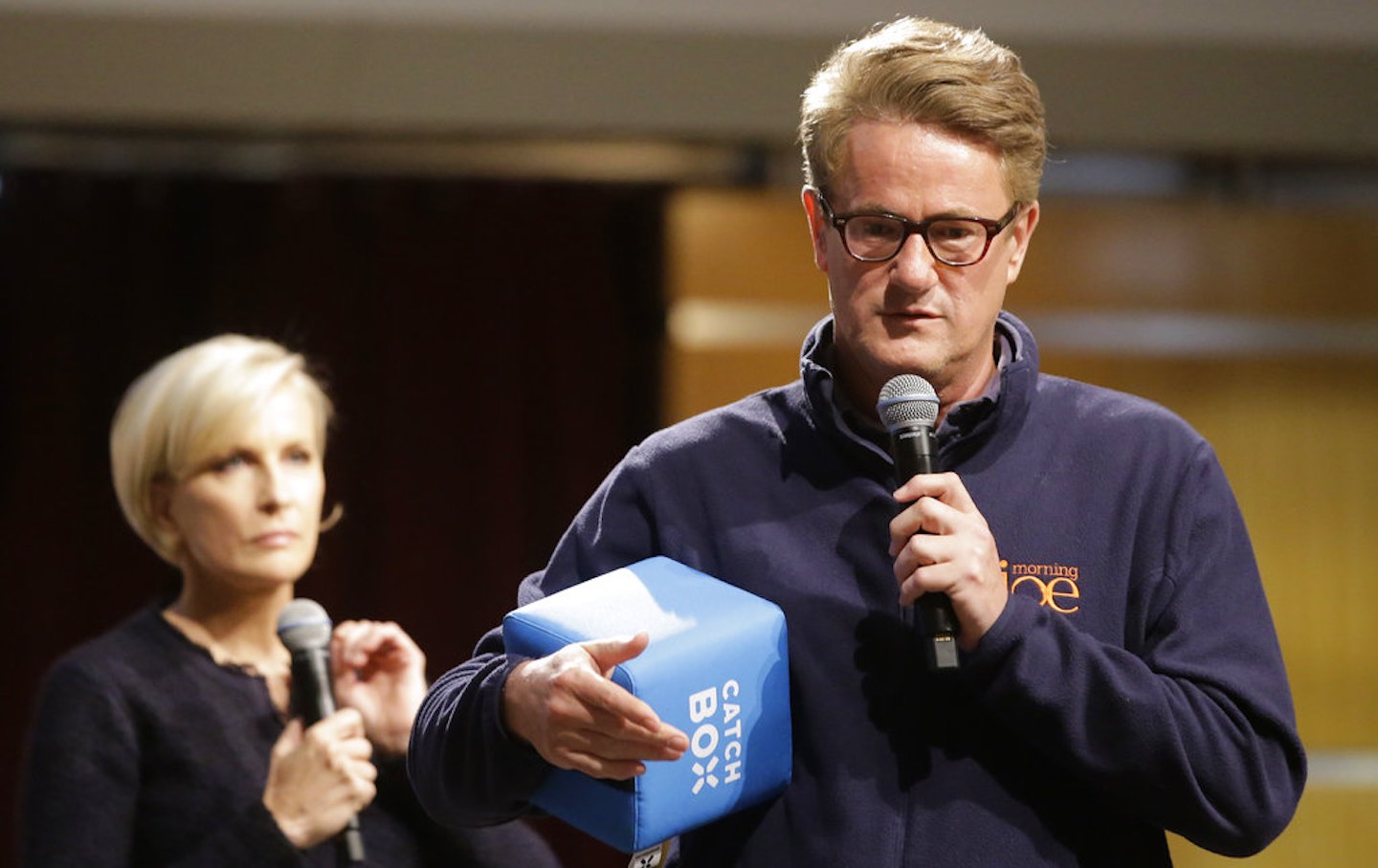
Mr. Scarborough Goes to Mar-a-Lago Mr. Scarborough Goes to Mar-a-Lago
The hosts of Joe Biden’s favorite political talk show have quickly pivoted to kissing the ring of the incoming president.

Watching a Parallel Media Try to Make Trump the Big Sports Story Watching a Parallel Media Try to Make Trump the Big Sports Story
The president-elect did not dominate the world of sports this weekend, but Fox News and Internet tabloids are inventing new realities.

The First Amendment Will Suffer Under Trump The First Amendment Will Suffer Under Trump
Given what’s heading our way, we need a capacious view and robust defense of the First Amendment from all quarters.
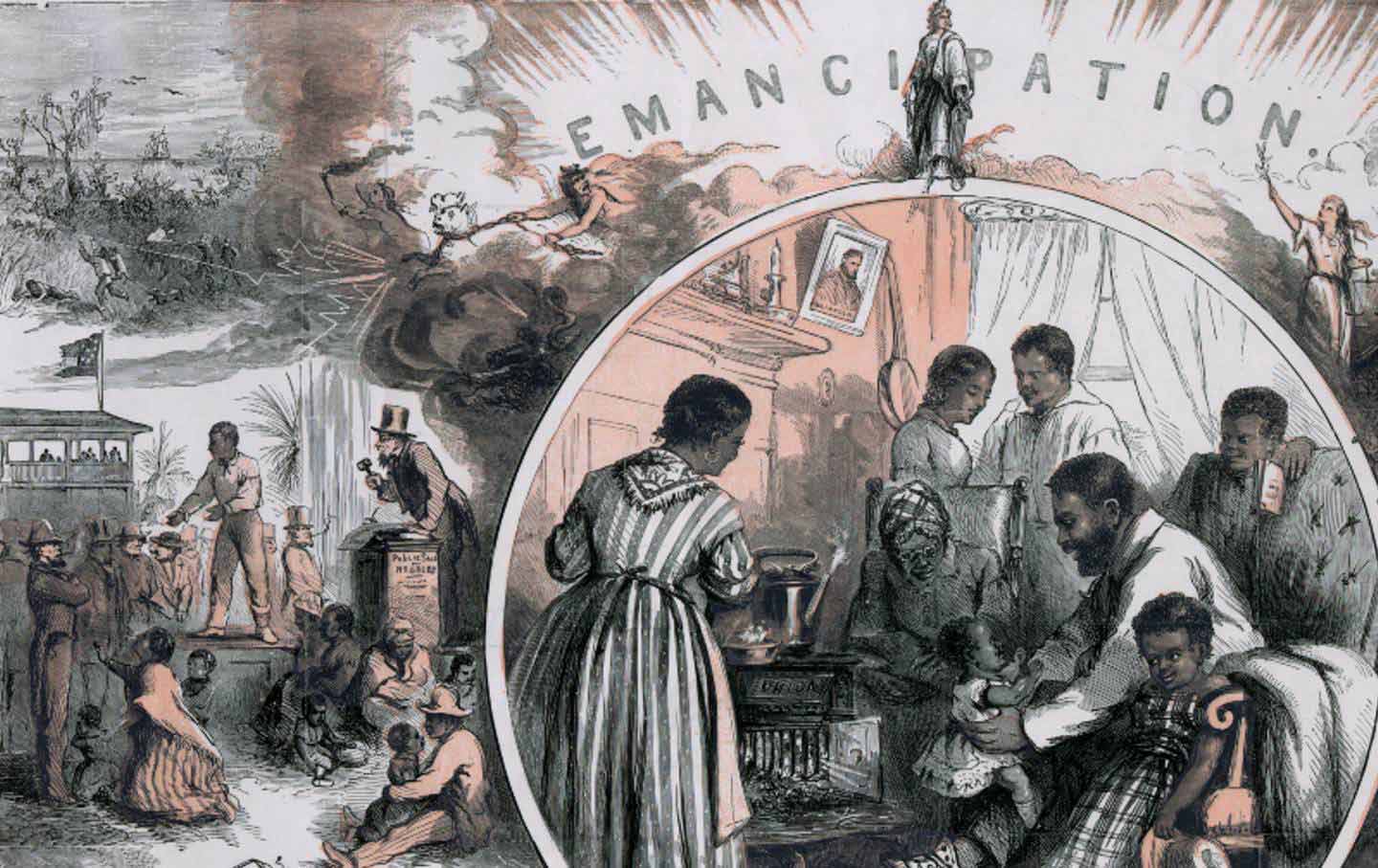
Slavery in an Age of Emancipation Slavery in an Age of Emancipation
Robin Blackburn’s sweeping history of slavery and freedom in the 19th century.

How Wisconsin Lost Control of the Strange Disease Killing Its Deer How Wisconsin Lost Control of the Strange Disease Killing Its Deer
Despite early containment efforts, chronic wasting disease has been allowed to run rampant in the state. That’s bad news for all of us.

The Prison Rodeo at the Heart of Legal Enslavement The Prison Rodeo at the Heart of Legal Enslavement
Angola prison workers make between 2 and 40 cents an hour. They also have a controversial outlet for recreation and to vend their wares at market rate: a rodeo.


